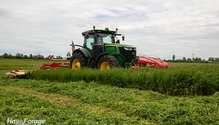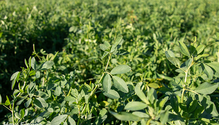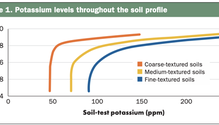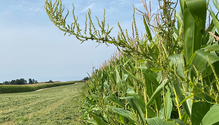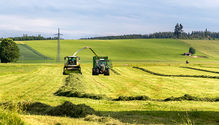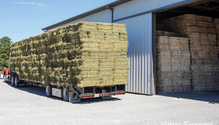Close
The National Alfalfa & Forage Alliance (NAFA) released the 2026 edition of its popular “Alfalfa Variety Ratings - Winter Survival, Fall Dormancy & Pest Resistant Ratings for Alfalfa Varietie
The colder months ahead require farmers to winterize hay equipment, take inventory of stored forages, and draw up plans to feed livestock. As we wrap up forage production for 2025, it’s a good time
There are few businesses that I appreciate more than a trusty convenience store. The best ones are located right along the highway or near an offramp to minimize detours. They earn my repeat business
After a year of somewhat tighter availability of certain key alfalfa varieties, 2026 will offer a better overall supply of alfalfa
Though the calendar isn’t always a reliable resource to determine planting dates and harvest schedules, many farmers have an idea where their annual activities typically fall within those 12 pages
A balanced uptake of nutrients allows plants to thrive. Potassium (K) is one of the three primary nutrients, along with nitrogen and phosphorus, that is often applied in the greatest quantities. But how
Farmers can add weed control to the long list of benefits gained from growing alfalfa in crop rotations. According to Mark Renz, being a dense stand of perennial forage that is cut several times a year
Have you ever seen a forage analysis report where the concentration of acid detergent fiber (ADF) in a forage sample was similar or even greater than the concentration of neutral detergent fiber (NDF)?
Kelsey Woldt is the oldest of the five daughters who were born and raised on Woldt Farms in Brillion, Wis. Now serving as the farm’s human resources manager, Woldt and her sisters have all been invo
After 13 years of working in extension, I can say that the only constant is change. The same can be said about our weather
When adult alfalfa weevils began appearing earlier than usual in Montana fields, agricultural researchers took notice
When you turn your smartphone on “do not disturb” mode, it quiets all activity, from texts to calls and other app notifications. It won’t ring, vibrate, or even light up the screen, which
Bruce Lackman hasn’t always rotationally grazed his cattle. It wasn’t a widely adopted practice when he was growing up, and it still isn’t popular in his region of central Missouri today
Is your alfalfa lacking persistence? Have you experienced a high frequency of winterkill in the past? Are your stands susceptible to insect damage and disease pressure? If you answered “yes”
I’ve never been a fashion leader or even a follower. I just know what I like and dress accordingly. Carhartt and Wrangler are my “go to” brands for most occasions. The one piece of clothing
The advent of forage testing, especially since near-infrared spectroscopy (NIRS) came on the scene, has moved the needle by leaps and bounds from a harvest timing and animal performance standpoint. It
Working in agriculture — especially hay and forage production — requires long, demanding hours and is heavily reliant on coordination, teamwork, and adaptability. Field teams operate under
The world moves ever faster, but the pace of farming can’t always keep up
Kiowa County, Kansas, contains 1,800 people, three incorporated communities, and one traffic signal
Wilting a cut hay crop to baling moisture is rarely easy, but if you do it where rainfall and humidity are as common as mosquitoes during the summer, it can take a mental toll on the body
..
Visit our partner publications:
Hoard's Dairyman | Journal of Nutrient Management

